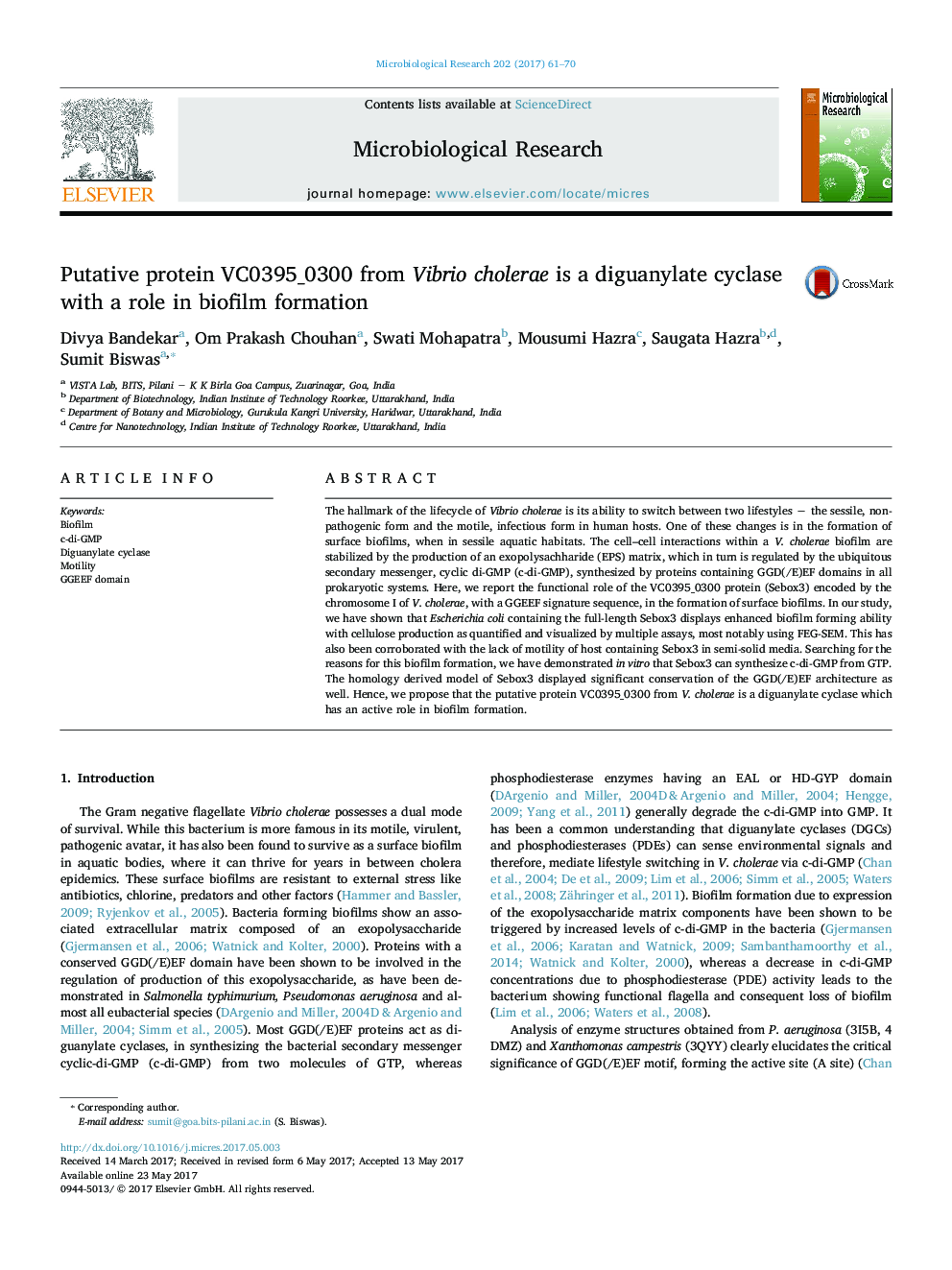| Article ID | Journal | Published Year | Pages | File Type |
|---|---|---|---|---|
| 5522438 | Microbiological Research | 2017 | 10 Pages |
The hallmark of the lifecycle of Vibrio cholerae is its ability to switch between two lifestyles â the sessile, non-pathogenic form and the motile, infectious form in human hosts. One of these changes is in the formation of surface biofilms, when in sessile aquatic habitats. The cell-cell interactions within a V. cholerae biofilm are stabilized by the production of an exopolysachharide (EPS) matrix, which in turn is regulated by the ubiquitous secondary messenger, cyclic di-GMP (c-di-GMP), synthesized by proteins containing GGD(/E)EF domains in all prokaryotic systems. Here, we report the functional role of the VC0395_0300 protein (Sebox3) encoded by the chromosome I of V. cholerae, with a GGEEF signature sequence, in the formation of surface biofilms. In our study, we have shown that Escherichia coli containing the full-length Sebox3 displays enhanced biofilm forming ability with cellulose production as quantified and visualized by multiple assays, most notably using FEG-SEM. This has also been corroborated with the lack of motility of host containing Sebox3 in semi-solid media. Searching for the reasons for this biofilm formation, we have demonstrated in vitro that Sebox3 can synthesize c-di-GMP from GTP. The homology derived model of Sebox3 displayed significant conservation of the GGD(/E)EF architecture as well. Hence, we propose that the putative protein VC0395_0300 from V. cholerae is a diguanylate cyclase which has an active role in biofilm formation.
